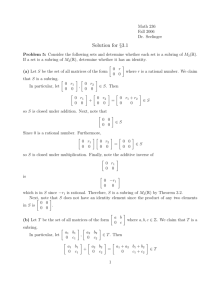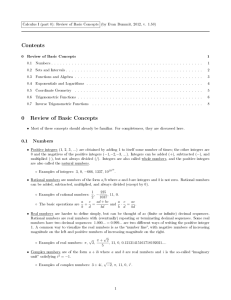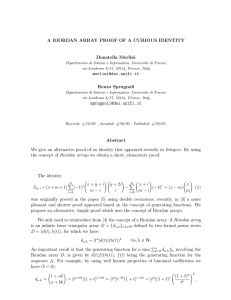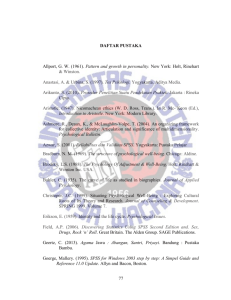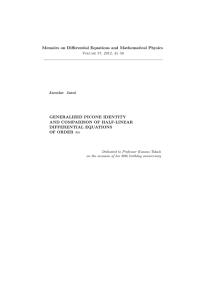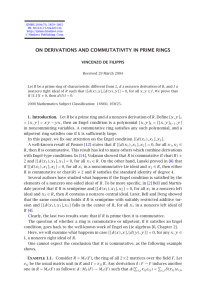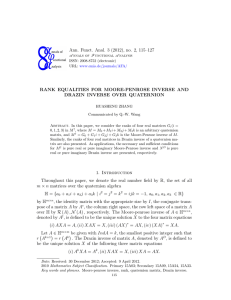The Axioms of Real Numbers
advertisement
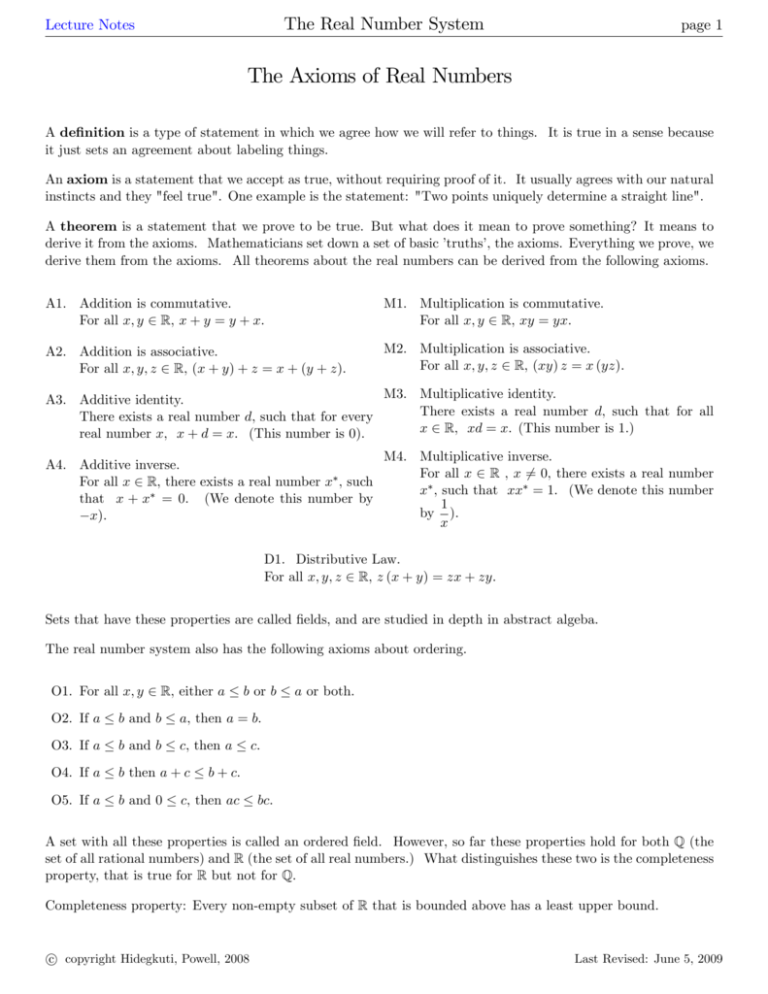
The Real Number System Lecture Notes page 1 The Axioms of Real Numbers A de…nition is a type of statement in which we agree how we will refer to things. It is true in a sense because it just sets an agreement about labeling things. An axiom is a statement that we accept as true, without requiring proof of it. It usually agrees with our natural instincts and they "feel true". One example is the statement: "Two points uniquely determine a straight line". A theorem is a statement that we prove to be true. But what does it mean to prove something? It means to derive it from the axioms. Mathematicians set down a set of basic ’truths’, the axioms. Everything we prove, we derive them from the axioms. All theorems about the real numbers can be derived from the following axioms. A1. Addition is commutative. For all x; y 2 R, x + y = y + x. M1. Multiplication is commutative. For all x; y 2 R, xy = yx. A2. Addition is associative. For all x; y; z 2 R, (x + y) + z = x + (y + z). M2. Multiplication is associative. For all x; y; z 2 R, (xy) z = x (yz). M3. Multiplicative identity. A3. Additive identity. There exists a real number d; such that for all There exists a real number d; such that for every x 2 R, xd = x. (This number is 1.) real number x, x + d = x. (This number is 0). A4. Additive inverse. For all x 2 R, there exists a real number x ; such that x + x = 0. (We denote this number by x). M4. Multiplicative inverse. For all x 2 R , x 6= 0, there exists a real number x ; such that xx = 1. (We denote this number 1 by ). x D1. Distributive Law. For all x; y; z 2 R, z (x + y) = zx + zy. Sets that have these properties are called …elds, and are studied in depth in abstract algeba. The real number system also has the following axioms about ordering. O1. For all x; y 2 R; either a b or b O2. If a b and b a; then a = b. O3. If a b and b c; then a O4. If a b then a + c O5. If a b and 0 a or both. c. b + c. c; then ac bc. A set with all these properties is called an ordered …eld. However, so far these properties hold for both Q (the set of all rational numbers) and R (the set of all real numbers.) What distinguishes these two is the completeness property, that is true for R but not for Q. Completeness property: Every non-empty subset of R that is bounded above has a least upper bound. c copyright Hidegkuti, Powell, 2008 Last Revised: June 5, 2009 The Real Number System Lecture Notes page 2 Identity and inverse elements An identity element does ’nothing’. It is a unique elemet of the set that works for every element. The inverse of an element is another element that when the operation applied, results in the identity. inverse is di¤erent for di¤erent numbers. Identity Inverse Notation Systematic Name De…ning Property Value Systematic Name Non-Systematic Name De…ning Property Notation Real Numbers with Addition hR; +i additive identity does ’nothing’in addition 0 additive inverse of a opposite of a a + (opposite of a) = 0 i.e. ’takes’a to the identity a The Real Numbers with Multiplication hR; i multiplicative identity does ’nothing’in multiplication 1 multiplicative inverse of a reciprocal of a a (reciprocal of a) = 1 i.e. ’takes’a to the identity 1 a For more documents like this, visit our page at http://www.teaching.martahidegkuti.com and click on Lecture Notes. E-mail questions or comments to mhidegkuti@ccc.edu. c copyright Hidegkuti, Powell, 2008 Last Revised: June 5, 2009
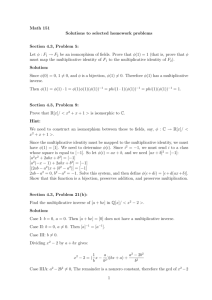
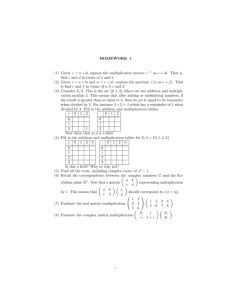
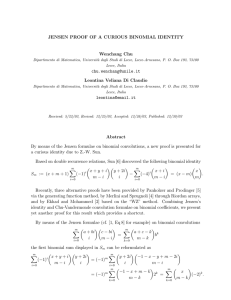
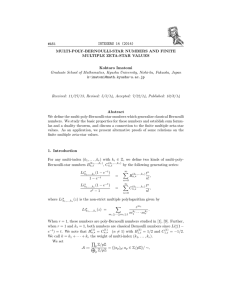
![arXiv:0802.0650v1 [math.DG] 5 Feb 2008](http://s2.studylib.net/store/data/018362643_1-28c029f00431c2be9e4ea8345285a4d0-300x300.png)
